How a piece of information is framed can make it more or less effective at changing behavior.
I assumed, as you might have, that the framing effect was just about how we present information. But I was surprised to learn that delves into our psychology, cognitive biases, and human nature. Thankfully, I studied psychology at university before my career in marketing.
What is the framing effect in marketing? The framing effect is the difference in consumer behavior based on if something is framed as a gain (“you could have…”) or a loss (“don’t miss out…”). Consumers want certainty with gains but are risk-seeking with loss.
As marketers, we see different response rates based on the framing of product features and statistics, especially in advertising.

Advertising the fuel economy of the Ford F-150 V6 as “22 Miles Per Gallon” may get an inadequate response as the number is quite low when compared to cars and midsized SUVs. Potential customers will think about the money they will spend on gas if they buy a truck. But framed as “Best in Class Fuel Economy” makes the F-150 sound like a smart choice, and has a better response.
The difference in behavior is even most extreme when the message is trying to reduce the risk of a negative outcome, such as public health, insurance products, and safety features.
The message “Seat belts save more than 13,000 lives every year” may make people feel all warm and fuzzy, but will not change their behavior.
“More than 4,000 die every year because they weren’t wearing a seatbelt” would be far more effective in a public health campaign. People don’t like to imagine themselves or a family member as one of those 4,000 people.
The framing effect is one of several cognitive biases or heuristics built into our psychology. Our understanding of the framing effect comes from the psychological research of Amos Tversky and Daniel Kahneman, author of the breakout book: Thinking Fast and Slow. The Framing Effect is a subset of the broader topic of Prospect Theory.
Framing Effect Definition
The difference in behavior when the same information if presented positively vs. negatively.
The framing effect is one of many cognitive biases in our psychology. The framing effect is the difference in decision making when the same information is framed in different ways. People tend to avoid risks when presented with gain frames and seek chances when faced with a loss frame.
The framing effect is part of behavioral economics. Classical economics assumes a perfectly rational decision-maker who would make the same decision no matter how the framing of the information. But we are not entirely rational. Behavioral economics has more predictive models of consumer behavior because the theories account for our psychology.
We all know you would get a different response if you asked your spouse to take out the trash by saying “hey, the trash is full” versus “I would appreciate if you took out the garbage.” The data being communicated is “the garbage is full and needs to be taken out,” but the framing is very different.
“Hey, the trash is full” is a loss frame, and thus, the spouse is more willing to risk having an angry partner. But “I would appreciate if you took out the garbage” is a positive frame because there seems to be something to be gained from taking out the trash. The spouse wouldn’t want to miss out on the opportunity.
Types of Frames
The five ways we best understand how information can be framed.
There are many ways to frame the same information. But five major categories have been psychologically studied: gain frames, loss frames, temporal frames, value frames, and goal frames.
The best understood are gain frames, loss frames, and temporal frames because they are universal. Value frames and goal frames have to be tailored to the one being communicated too, as we all have a unique set of values and goals.
Gain Frames

People like certainty with gains.
I.e., avoid risks in a gain frame.
People want certainty when they are dealing with positive gains; they are risk-averse. Individuals will choose a guaranteed small amount of gain, rather than selecting a chance at a considerable gain.
Loss Frames

People like taking risks with losses
I.e., They seek risks in a loss frame
Individuals are more risk-seeking when faced with the possibility of highly probable or certain losses. People will choose a chance at a high loss over a guaranteed small loss. They will risk a significant loss for the possibility of no loss at all.
Temporal Frames
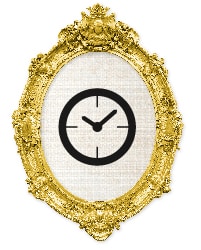
Most people will choose immediate smaller rewards over long term large rewards.
I.e., They discount rewards in the future (temporal discounting.)
Most people have a hard time with delayed gratification; they want it now. Temporal framing is why fiscal responsibility and retirement planning is such a hard sell.
Value Frames

Most people will respond to information more if it is framed as affecting something they value.
I.e., They listen to information on issues they have a stake in.
People may ignore a piece of information with no framing but then respond to the same information if it is framed as affecting something they care about. These framings can just be based on interests and hobbies, but tend to be political (human rights, gun control, wealth redistribution, etc.)
For example, people may glaze over “21,065 people were killed in Syria in 2018” but be interested to learn that “1,106 children were killed in the Syrian civil war in 2018.” We value the lives of children.
Personal note: it hurts my heart as a father to think about those lost children.
Goal Frames

Most people respond to information more if it is framed as helping or hindering an attempt they are making to improve their circumstances.
I.e., They respond to information that will support their goal, or get in their way.
With goal framing, there are normative, hedonic, and gain goals. Normative goals are when they are working towards the benefit of their group (e.g., going out to lunch with co-workers). Hedonic goals are when they are seeking some personal pleasure (e.g., buying a sports car). And gain goals are when they are trying to accumulate some resource (e.g., saving for a trip.)
Why is the framing effect important?
If framing can affect behavior, then we need to know when and how it is working on other people and ourselves.
If the same information is presented differently can lead us to different behaviors, then we need to understand how that works. We need to know when the framing effect influences people, and if we are being manipulated ourselves.
It is essential to understand framing because we can use it to be more influential and persuasive when talking to other people. We can also break down the messaging of competitors and people promoting conflicting viewpoints.
We also can understand how this affects ourself. We may be making ineffective decisions if framing effects are distorting our perception of the situation. We need to be on guard and strip away the framing to look at the raw information if we are to make the best decisions. Just the facts, ma’am!
Framing Affect in Brand Marketing
Branding, in some sense, is the art of framing information in a way that is meaningful to some people.
Marketers care about how their communication translates into behavior. The framing effect predicts that different behaviors can come out of the same information depending on how it is presented. Marketers need to find the best possible frame so that the data is meaningful to those who need to hear it.
Marketing.
Marketing, in general, is taking information and framing it in the most affecting way. A talented marketer can communicate to people in a way that they care about.
You can improve your thinking as a marketer with a better understanding of the framing effect. You will come up with better solutions if you think granularly about the gain frame, loss frame, temporal frame, value frame, and goal frame.
For a given piece of information and audience, what frame would be most effective? If it is not immediately clear to you, then test it!
Ask yourself: can you combine frames to be even more effective? For example, you could combine the gain frame and the value frame to pitch a substantial benefit in something they value.
Branding
Branding is the art of talking directly to a subset of people who care about the solution being offered.
Branding is the art of using the value frames and goal frames to talk directly to a person with a particular set of values and goals.
For example, Tesla speaks to people who value reducing our dependence on fossil fuels and have the goal of saving money on their transportation. (Lately, it also people who value status and how they are perceived, but I digress…)
Another example is Nike. They speak directly to people who value winning or have the goal of improving their athletic performance.
I studied the DC Shoes history and found that their break out success was a re-framing of existing technology. They used shock absorbing rubbers from athletic shoes in a flat bottom skater shoe. All of a sudden, skaters cared about shock-absorbing shoes because it was framed in a way they cared about.
Messaging and framing become easy once a brand isolates the values and goals of the people they are uniquely equipped to help. Copywriting is far easier when you are not trying to please everyone. The graphic design process is more straightforward, as well.
How do you apply the framing effect in advertising?
If your product is a reduction of a negative outcome, you need to make significant changes.
The product being promoted is a net positive for the vast majority of marketers and advertising executives. If you are in this camp, you need to keep framing your offering in the most positive frame possible. Score bonus points if you can associate the product with a value or a goal of the people in your target market.
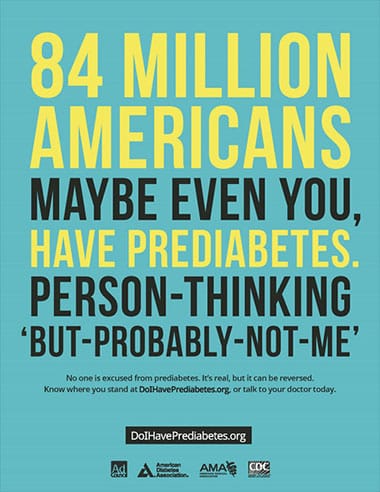
If your product is one about a chance of a gain (e.g., a lottery ticket) or a reduction in the risk of an adverse outcome (e.g., an insurance policy), then there is a more effective way to frame your product.
The framing effect has the most significant implications for the advertising of:
- Public Health
- Insurance
- Investing
- Lottery and Gambling
- Political Campaigns
If you are a marketer or an advertising executive, I wish I could give you straight forward advice. But you will need to test a variety of framings to see what works best for your product.
The rule of thumb is that people remember adverse outcomes vividly, and do not remember the times they won something. Thus, when presented with information about risk, they quickly imagine a lousy experience and will do anything to maximize their chance of not experiencing that again.
Programmatic Advertising
When ads were printed or aired to millions, there was no way of tailoring the frame to the recipient. You did a bit of market testing on the message, and hoped for the biggest impact.
Now, we have the ability to test and tailor the framing down the individual. If you are looking to do a programmatic advertising campaign on social media, think about automatically adjusting the framed on the five dimensions (gain, loss, temporal, value, and goal.)
Real Examples of Framing Effect
Combating The Anti-vaccination Trend
When anti-vaccination sentiment was on the rise, public health officials poorly framed the statistics about the benefits of vaccination. Public health marketers were toting the benefits to kids when you choose the vaccinate them and debunking the misinformed connection between vaccination and autism. Both are gain frames.
But the early efforts backfired because they reduced the number of people who intended to vaccinate their children. Toting the benefits to kids because healthy children are the default for young parents; they don’t consider their kids ever being sick. And debunking the autism link made people think about the possibility of side effects. People reported less belief in the connection between vaccines and autism but indicated they were less likely to vaccinate.
What works with anti-vaxxers is value frames. What works is focusing on the horrible effects of not vaccinating on infants, pregnant women, immunocompromised people, and the elderly. It appeals to an anti-vaxxer’s empathy.
Focusing on the values of liberty and purity would also be effective because these are especially important to the types of people who are attracted to the anti-vax movement.
Limited Right To Sue In Automobile Insurance
When signing up for a new automobile insurance policy, 80% of New Jersey residents chose “limited right to sue” while only 25% of Pennsylvania residents chose that option.
New Jersey and Pennsylvania are neighboring states, so what would account for such a difference in response?
“Limited right to sue” was the default option in New Jersey. “Full rights to sue” was the default option in Pennsylvania.
Even though choosing “full rights to sue” may be advantageous, the New Jersey people valued not going against the grain and chose the default option.
Use Of Sunscreen to Reduce Chance of Skin Cancer
The use of sunscreen is the perfect scenario for prospect theory. You have a behavior that reduces the chance of a deadly illness. It involves risk and a negative outcome.
Prospect Theory and the research on framing effect would predict that a loss frame would result in the most significant behavior change. People will have the best chance of having a life without skin cancer.
A loss-framed would be something like:
More than two people die of skin cancer every hour. If you do not apply sunscreen, you could have twice as high a chance to develop the disease.
But there wasn’t a lot of difference between the different framings when studied. A positive or negative frame both had about the same response for most people.
Except for men. Adult men improved their use of sunscreen if they were presented with the loss-frame.
Framing Effect In Politics: Crime in Addison
We are all used to “spin” in politics; the maneuvering to take the same facts and frame them in the way that best plays to the political.
After political debates, candidates and their staff go off into “spin rooms” where they try to frame what everyone just saw in the most flattering manner.
But very subtle differences in a message can profoundly change peoples political views, as proven in a study out of Stanford.
In the study, 485 participants read a piece about crime in the fictional city of Addison. But there was a slight difference for half of the participants. One set of participants read that crime was a “beast preying” on the municipality. The second half of people read that crime was a “virus infecting” the town.
That slight rewording changed peoples attitudes towards the correct response the city government should take. Participants that heard the frame “beast preying” reported wanting to see more punishment of criminals, while those who read “virus infecting” were more in favor of broader reforms.
The authors of the study, Paul H. Thibodeau and Lera Boroditsky, believe that readers can infer causes that are consistent with the frame. “Beast preying” makes it sound like the cause of the lousy crime statistics is bad actors. But “virus infecting” sets readers up to believe it is a systemic problem.
The Framing Effect Is Part Of Our Psychology
The reason framing information affects us is because of human nature.
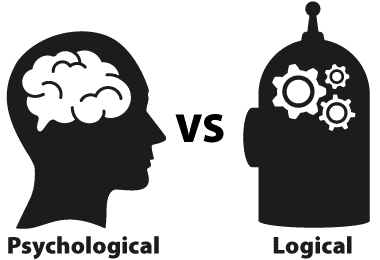
If we didn’t have the deal with our psychology, we would make the same decisions no matter how you frame the information.
But we are not. We have cognitive biases, heuristics, and psychology built into our neurology.
Our understanding of the framing effect and Prospect Theory (the framing effect’s parent topic) come from research into human psychology.
Prospect Theory
The psychological theory that people crave certainty with gains, and take risks to get rid of losses.
There is a difference between our choices we would make if we were rational and mathematical, versus the decisions make when guided by our intuitions and biases. The difference is especially pronounced when risk is involved.
Amos Tversky and Daniel Kahneman, the authors of prospect theory, demonstrated most people choose a guaranteed $85 win over an 85% chance of winning $100. Conversely, they choose an 85% chance of losing $100 over a sure loss of $85.
These two bets are equivalent if you work out the math; a robot would see no difference. But humans, with our irrationality, see these as very different and act very differently accordingly.
Prospect theory is an ability to predict how we react to gains and losses, which is irrational. Humans seek certainty with gains and risk with losses.
There is a mathematical function based on prospect theory, which predicts what level of gain and loss versus risk and certainty that people find equivalent. If you know the gain and the percentage chance of a positive outcome, you can use this equation to predict how much less most people would take instead of a sure bet or vice versa.
But what is important about the equations is how different the gain side is from the loss side when you graph it. People are willing to take far greater gambles with losses than they are gains. So if you frame something as a loss, rather than a gain, people act very differently.
The framing effect is a cognitive bias
Cognitive biases, like the framing effect, are common thinking errors we make all the time.
Humans are not entirely rational. We often make decisions that are different from what a perfectly reasonable being, like a robot, would make.
If you presented a problem to Spock from Star Trek, who is a perfectly rational character, it would not matter how you framed it. He would take out the pieces of information that are relevant, and act on them in a mathematical, sound, and predictable way. He would mathematically weigh risks and rewards and maximize the chance at the best outcome.
A cognitive bias is a systematic thinking error that causes us to make decisions differently than a purely rational process.
Our cognitive biases are not necessarily wrong. That conflict was often portrayed on Star Trek. Spock would pose his rational option, where Captain Kirk would make his decision based on emotion and principle, something Spock would come to admire.
We have our cognitive biases because they worked better for a long time. We have evolved to have the framing effect because taking significant risks for big rewards would often take us out completely. Our surviving ancestors were those to kept to safe bets for positive gains but took big risks defending their families from significant threats.
Cognitive biases usually relate to how we process and recall memories. We remember different bits of information and past experiences differently depending on what they are.
The framing effect is no different; it is an issue around how we recall memories of losses. Our brains encode memories of losses very strongly; the neural connections are physically more robust so reconnecting to that memory is easier. Memories of positive gains? Still encoded, but not as strong or easy to recall.
So when you are faced with a risk of a gain or a loss, you can recall all the times you have lost out very quickly, but the memories of winning are less reliable. So you have a bias against loosing out.
Even as you read these last few paragraphs, you probably thought of a time where you lost something you cherished. It’s human nature!
Similar cognitive biases/heuristics
Availability Heuristic

The availability heuristic is when top-of-mind examples influence how we evaluate a concept, action, or decision.
Example:
If your wife asks you where you want to order pizza from, you might answer with the restaurant that you just saw an ad for.
Anchoring

Anchoring is a heuristic where people tend to compare to a stated or implied reference point.
Example:
It might seem like a good deal if a price sticker says “Regularly priced $24.99. Our price $14.99.” But the regular price is just an arbitrary anchor point just there to make the purchase price look better.
Hindsight Bias
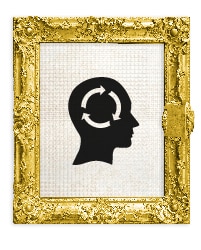
Hindsight bias is a cognitive bias which makes us feel as if we could have predicted an event that happened, even if it was genuinely unpredictable at the moment.
Example:
Imagine if a patron tries a new brand of salad dressing just to be left unsatisfied. they might think: “I should have known this would be worse than my favorite brand.” In reality, they can’t know until they try it.
Belief Bias
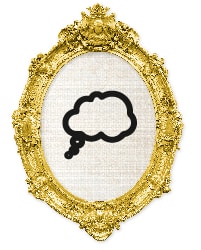
Belief bias happens when we are convinced by arguments that seem point to a plausible conclusion rather than any evidence that points to that conclusion. In other words, we are satisfied when an argument fits with what we already believe.
Example:
When I wrote about the Beyond Meat brand, the company’s founder, Ethan Brown, easily convinced me that meat consumption was a significant contributor to climate change. I was easily swayed because I am a believer in human-made climate change. When I looked into the facts for a recent article about Beyond Meat, the evidence livestock’s contribution to climate change is contested.
Self Serving Bias

We demonstrate our self-serving bias when we distort our perceptions and conclusions to protect and build our self-esteem.
Example:
I love reading about how electric cars are great for the environment. I have a Hyundai Ioniq, and love to hear about how buying a PHEV was a good idea. I subconsciously avoid reading about how disposing the batteries from electric cars might present hazards.
Status Quo Bias
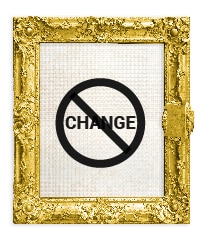
The status quo bias is when we take the current state as a reference point, and consider any difference from the current state to be negative.
Example:
Steve Jobs said: “[to be a true entrepreneur and innovator] you don’t do things 10% better; you do things ten times better.” Jobs knew that, because of the status quo bias, people will stick with a product they are used too unless an alternative is undeniably superior.
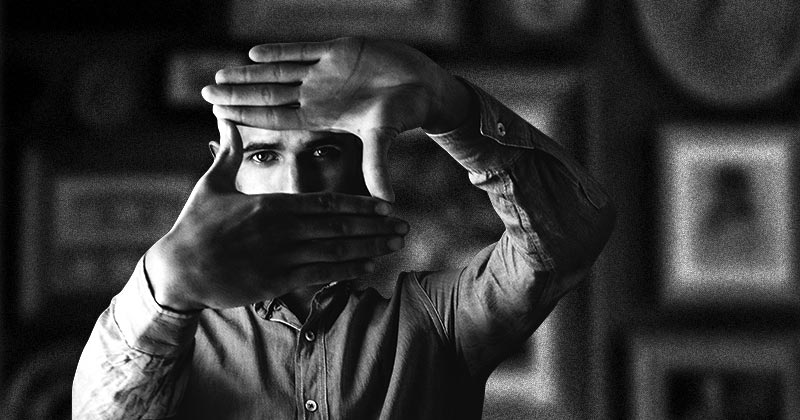
Leave a Reply